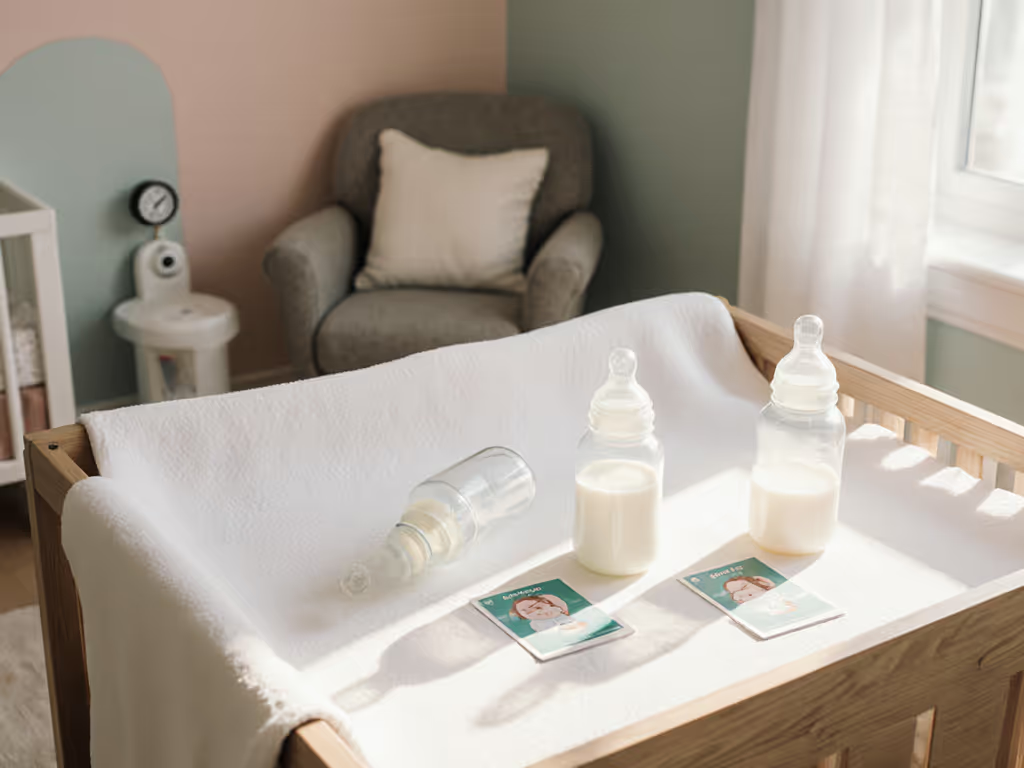
Baby Bottle History: How Designs Solved Feeding Challenges
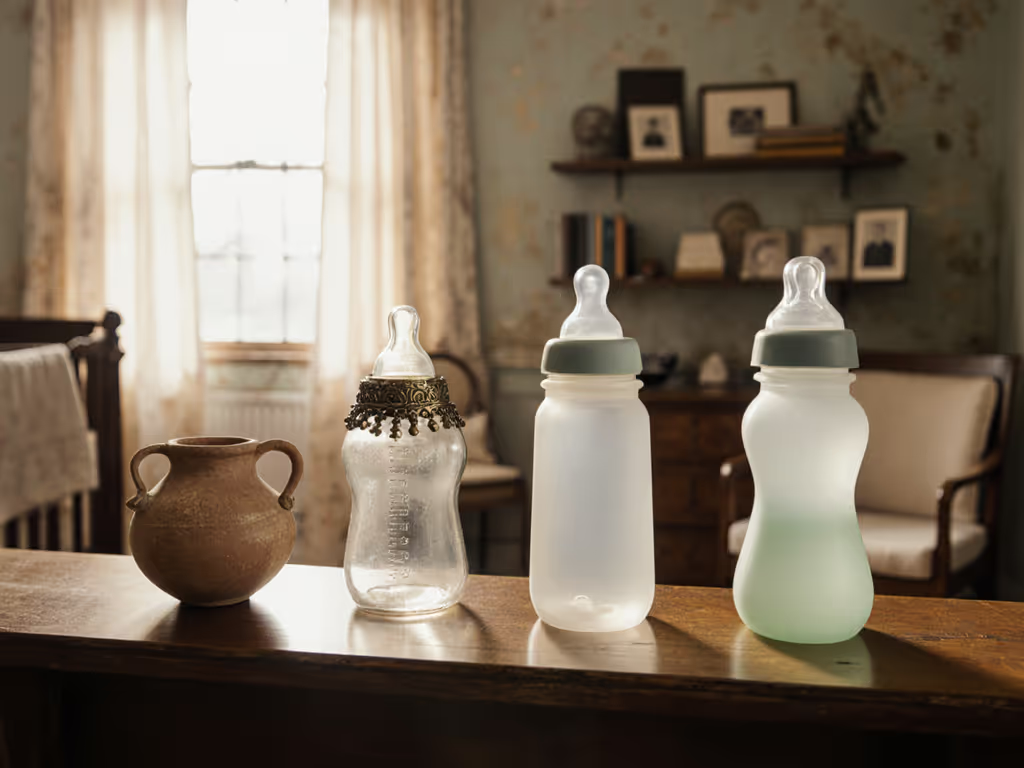
Watching an infant push away a bottle tells a story older than modern parenting. From ancient clay vessels to today's silicone nipples, the baby bottle history reveals a continuous pursuit of solutions to one core challenge: aligning feeding tools with a baby's natural comfort cues. This evolution of baby feeding wasn't driven by convenience alone; it emerged from hard lessons about infant safety, hygiene, and the subtle language of baby-led acceptance. Understanding this journey helps exhausted caregivers today cut through marketing noise and focus on what truly matters: observing their baby's signals.
As I've documented in feeding diaries across early childhood settings, comfort cues predict bottle acceptance far more reliably than brand labels or flow-rate charts. In a toddler room I supported years ago, two infants rejected 'newborn' bottles identical in labeling. One settled only when we widened the latch angle; the other needed faster flow pacing. Their bodies spoke clearly: comfort first, then compatibility.
How Ancient Practices Shaped Modern Solutions
What did caregivers use before modern bottles?
Long before glass or silicone, parents relied on resourceful alternatives. Ancient Europeans used cow horns fitted with cloth pads (c. 1350 BCE), while Middle Eastern cultures carved ceramic vessels resembling animals. Archaeologists recently confirmed residues of animal milk in 2,000-year-old clay cups discovered in Germany: evidence that infants were bottle-fed even in antiquity. Wet nursing remained common among elites, but for families without access, early feeding vessels were often repurposed household items: hollowed gourds, leather pouches, or even liquor bottles in 19th-century Europe. These solutions carried significant risks; without understanding bacteria, caregivers couldn't sterilize deep crevices in horn or clay, leading to frequent infant illness.
When did safety-focused design begin?
The 1850s marked a turning point. As documented in Pediatrics archives, France introduced the first purpose-built glass feeding bottles (1851), though their cork nipples and ivory airflow pins were still hard to clean. By 1860, the 'banjo bottle' (a glass flask with a long rubber tube) allowed self-feeding but became notorious as the 'Murder Bottle' due to bacterial growth in unwashed tubes. Its 1910 ban accelerated critical innovations: heat-resistant Pyrex glass (1924) enabled thorough sterilization, while wider bottle necks (1950s) addressed the century-old problem of inaccessible corners harboring milk residue. For safe daily routines today, see our cleaning and sterilization guide. These weren't just material upgrades; they responded directly to historical feeding practices where hygiene failures tragically shaped infant mortality rates.
Learning From Design Mistakes: How Pain Points Drove Progress
Why did rubber nipples replace leather and cork?
Early rubber nipples (patented 1845) initially failed due to toxic odors and heat sensitivity. Yet by 1900, improved rubber formulations addressed a fundamental comfort need: mimicking breast elasticity. Leather and cork teats required forceful sucking, causing jaw fatigue and air swallowing, a precursor to today's gas and colic complaints. Modern silicone's softness isn't mere preference; it evolved from observing how infants rejected rigid materials that disrupted natural latch angles. This aligns with what caregivers note in feeding diaries: babies consistently accept softer, breast-shaped nipples when flow rate matches their pace.
Comfort first, then compatibility; calmer feeds shape better habits.
How did venting systems solve air-intake issues?
The 'banana bottles' of the 1930s required parents to manually control milk flow by thumb pressure, a direct response to infant choking on unregulated streams. Later, 'clog bottles' with raised necks attempted airflow management but often caused vacuum lock (nipple collapse), forcing babies to work harder mid-feed. Today's vented systems trace their lineage to these experiments. Crucially, historical records show feeding technology progress accelerated when designers prioritized observable infant struggles (like furrowed brows during gulp-and-pause feeds) rather than theoretical flow rates. This mirrors modern pain points where mismatched venting creates reflux or nipple collapse. Compare designs in our anti-colic venting systems test.
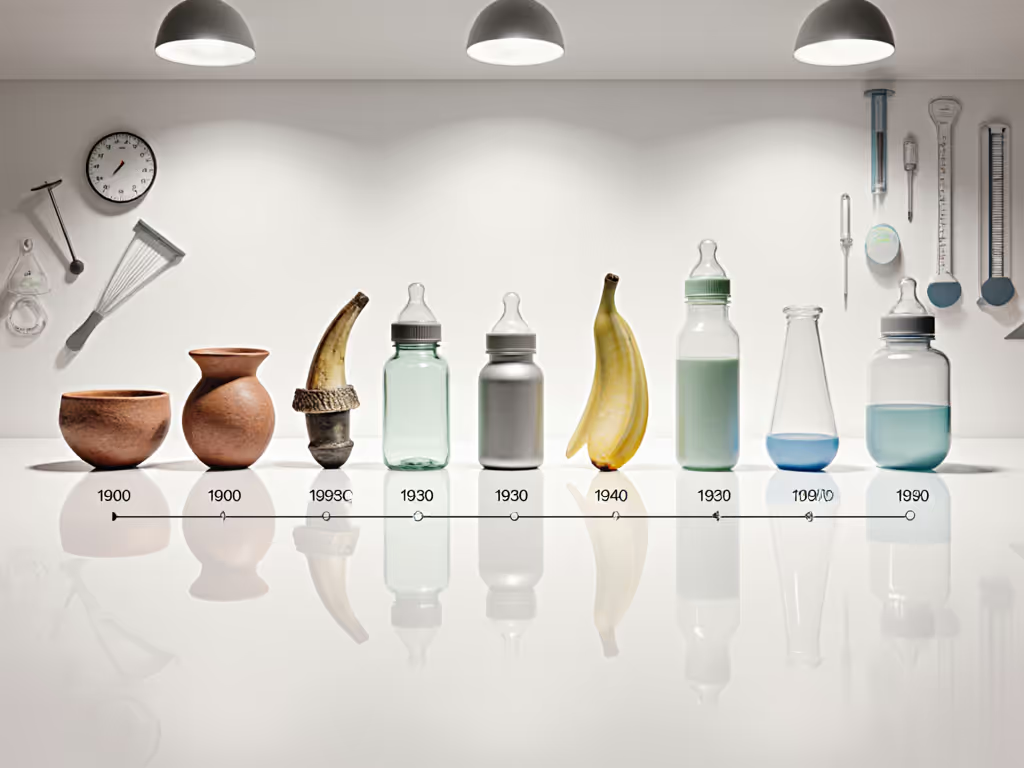
What Modern Parents Can Learn From This Journey
Why flow labels don't tell the whole story
The 1920s introduction of standardized 'slow/medium/fast' labels promised simplicity, yet historical patent archives reveal inconsistent testing methods. One 1940s manufacturer defined 'slow flow' as 45ml/minute; another used 65ml. This echoes today's frustration where 'level 1' nipples vary wildly between brands. My caregiver diaries show infants consistently accept flow rates matching their sucking rhythm, not arbitrary tiers. For brand-to-brand differences, use our lab-tested nipple flow rate guide. For instance:
- A preemie needing 15ml/minute may reject a 'slow' nipple rated 25ml
- A 3-month-old gulper may thrive on a 'level 2' rated 40ml
Rather than trusting labels, observe these cues:
- Acceptance cue: Relaxed jaw, rhythmic swallowing without chin flaring
- Rejection cue: Tongue thrusting, turning head away after 2-3 sucks
- Flow mismatch: Coughing (too fast) or falling asleep mid-feed (too slow)
How to apply historical wisdom to today's choices
The shift from multi-part 'Murder Bottles' to today's 3-piece glass systems reflects a century-long lesson: simplicity supports safety. Fewer components mean fewer crevices for bacteria: a direct solution to historical hygiene failures. Learn how each part impacts latch, venting, and cleaning in our baby bottle anatomy guide. When selecting bottles now:
- Test one variable at a time: Change only nipple geometry or flow rate per feeding session
- Prioritize observable comfort: Note if baby's cheeks dimple (indicates poor seal) or fists stay relaxed
- Mimic historical pacing: Ancient caregivers fed slowly using tilted vessels; modern paced bottle-feeding uses the same principle

Evenflo Classic Twist Glass Bottles
Moving Forward With Confidence
The baby bottle timeline isn't just about materials: it's a record of caregivers listening to infants. Each design shift, from ivory airflow pins to self-sterilizing vents, emerged from watching babies struggle and adapting. For today's parents facing daycare deadlines or nipple refusal, this history offers relief: you're not alone in your frustration. Generations of caregivers have navigated these same challenges by tuning into their baby's cues rather than marketing promises.
As your baby's needs evolve from newborn to six months, keep your focus on the signals they give you. Plan changes with our step-by-step bottle stages guide. Document swallowing patterns, latch depth, and post-feed calmness: these observations hold more value than any product label. Remember the lesson from those two toddlers in my early childhood room: comfort first, then compatibility. When you anchor decisions in your baby's feedback, you honor a feeding tradition as old as humanity itself.
Ready to simplify your bottle journey? Start tonight: During the next feeding, dim the lights and count your baby's sucks per swallow. Note if they pull off after 5 sucks (too fast) or pause after 10 (too slow). This single observation, rooted in centuries of feeding wisdom, will guide your next choice far better than any 'newborn' label.
Related Articles

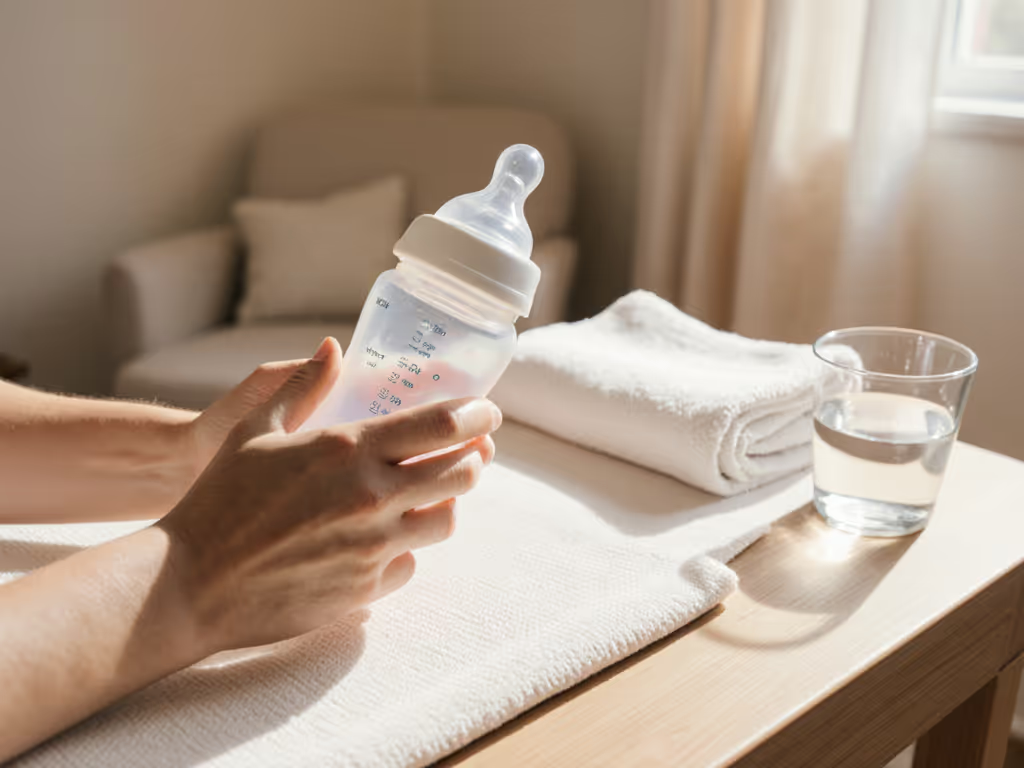
Why Slow Flow Nipples Matter: Complete Guide

Step-by-Step Guide to Preventing Nipple Confusion Easily
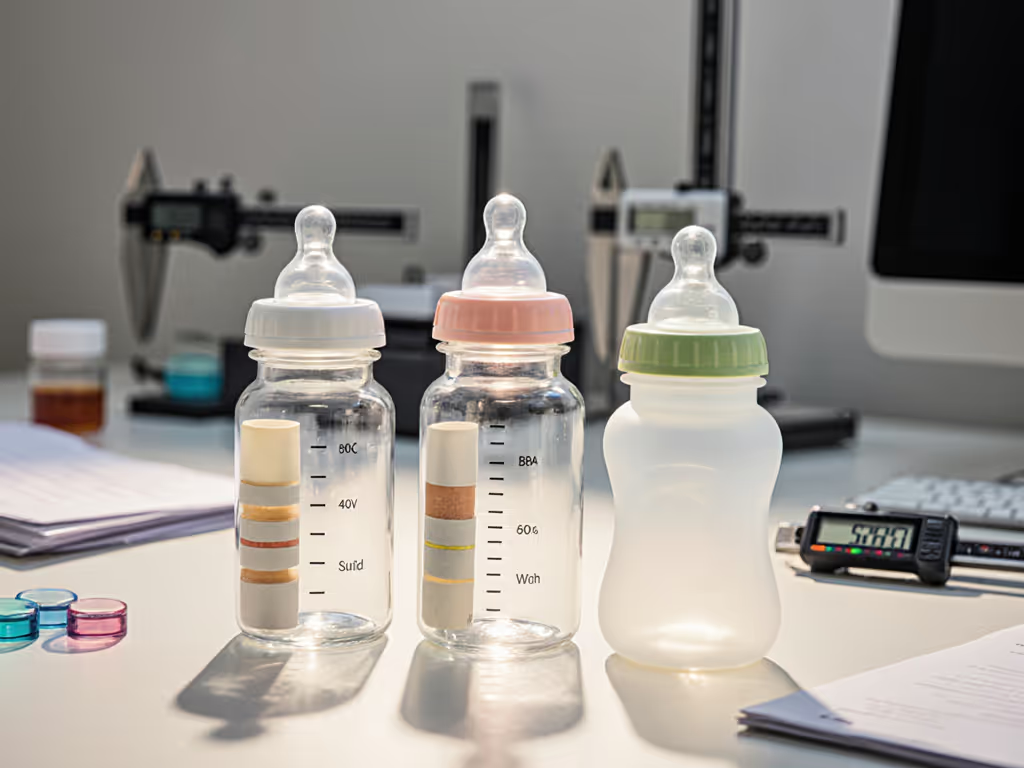
Complete Guide to the Role of Bottle Construction
